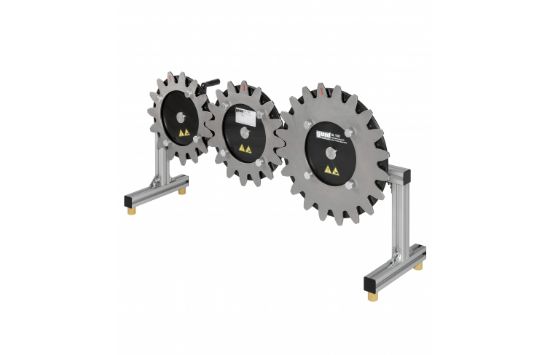Gears are machine elements that are classified as transmission or conversion elements. They are responsible for transferring torque and speed between guiding members such as wheels or pulleys. The motion is transferred either by means of non-positive connections (with gears, friction wheel) or positive connections (with gears, toothed belts, chains).
The GL 100 experimental unit illustrates the function and structure of belt drives, friction wheels and gear drives. Fundamental concepts and relationships, such as transmission ratio, change of direction of rotation, pitch and module or the function of intermediate gears can be explained clearly.
A sturdy anodised aluminium frame forms the base of the unit. The bearings of the wheels are attached to the frame by clamping levers in T-grooves. They are easy to detach and can be moved horizontally, thereby allowing a wealth of different setups.
All experiments are powered by hand. The size of the experimental unit ensures that the experiments are clearly visible even for a larger group of students.

